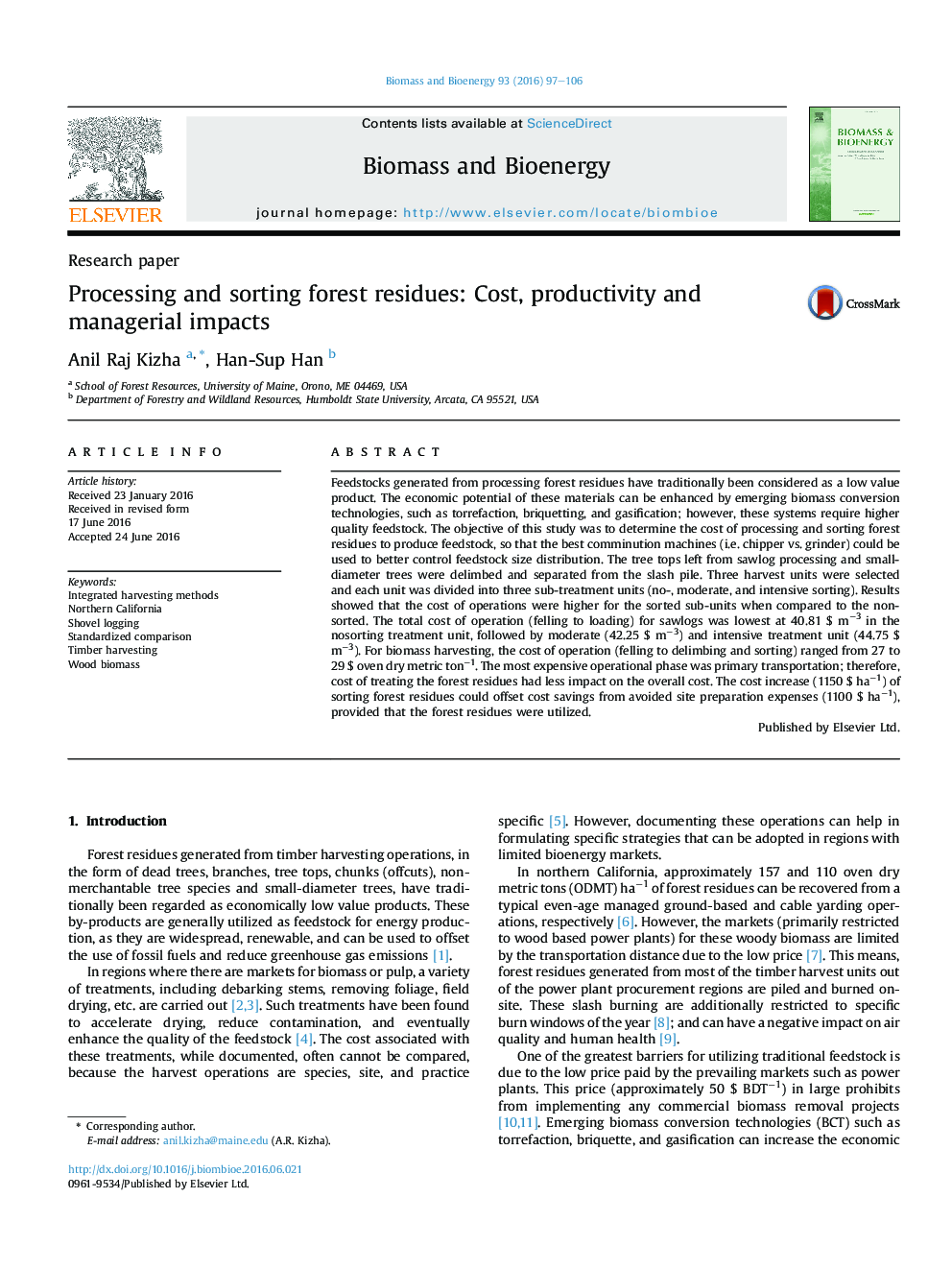| کد مقاله | کد نشریه | سال انتشار | مقاله انگلیسی | نسخه تمام متن |
|---|---|---|---|---|
| 7063166 | 1459800 | 2016 | 10 صفحه PDF | دانلود رایگان |
عنوان انگلیسی مقاله ISI
Processing and sorting forest residues: Cost, productivity and managerial impacts
ترجمه فارسی عنوان
پردازش و مرتب سازی بقایای جنگل: هزینه، بهره وری و تاثیرات مدیریتی
دانلود مقاله + سفارش ترجمه
دانلود مقاله ISI انگلیسی
رایگان برای ایرانیان
کلمات کلیدی
روش های جمع آوری شده، کالیفرنیای شمالی، ورودی بیل، مقایسه استاندارد، برداشت چوب، زیست توده چوب،
موضوعات مرتبط
مهندسی و علوم پایه
مهندسی شیمی
تکنولوژی و شیمی فرآیندی
چکیده انگلیسی
Feedstocks generated from processing forest residues have traditionally been considered as a low value product. The economic potential of these materials can be enhanced by emerging biomass conversion technologies, such as torrefaction, briquetting, and gasification; however, these systems require higher quality feedstock. The objective of this study was to determine the cost of processing and sorting forest residues to produce feedstock, so that the best comminution machines (i.e. chipper vs. grinder) could be used to better control feedstock size distribution. The tree tops left from sawlog processing and small-diameter trees were delimbed and separated from the slash pile. Three harvest units were selected and each unit was divided into three sub-treatment units (no-, moderate, and intensive sorting). Results showed that the cost of operations were higher for the sorted sub-units when compared to the non-sorted. The total cost of operation (felling to loading) for sawlogs was lowest at 40.81 $ mâ3 in the nosorting treatment unit, followed by moderate (42.25 $ mâ3) and intensive treatment unit (44.75 $ mâ3). For biomass harvesting, the cost of operation (felling to delimbing and sorting) ranged from 27 to 29 $ oven dry metric tonâ1. The most expensive operational phase was primary transportation; therefore, cost of treating the forest residues had less impact on the overall cost. The cost increase (1150 $ haâ1) of sorting forest residues could offset cost savings from avoided site preparation expenses (1100 $ haâ1), provided that the forest residues were utilized.
ناشر
Database: Elsevier - ScienceDirect (ساینس دایرکت)
Journal: Biomass and Bioenergy - Volume 93, October 2016, Pages 97-106
Journal: Biomass and Bioenergy - Volume 93, October 2016, Pages 97-106
نویسندگان
Anil Raj Kizha, Han-Sup Han,
